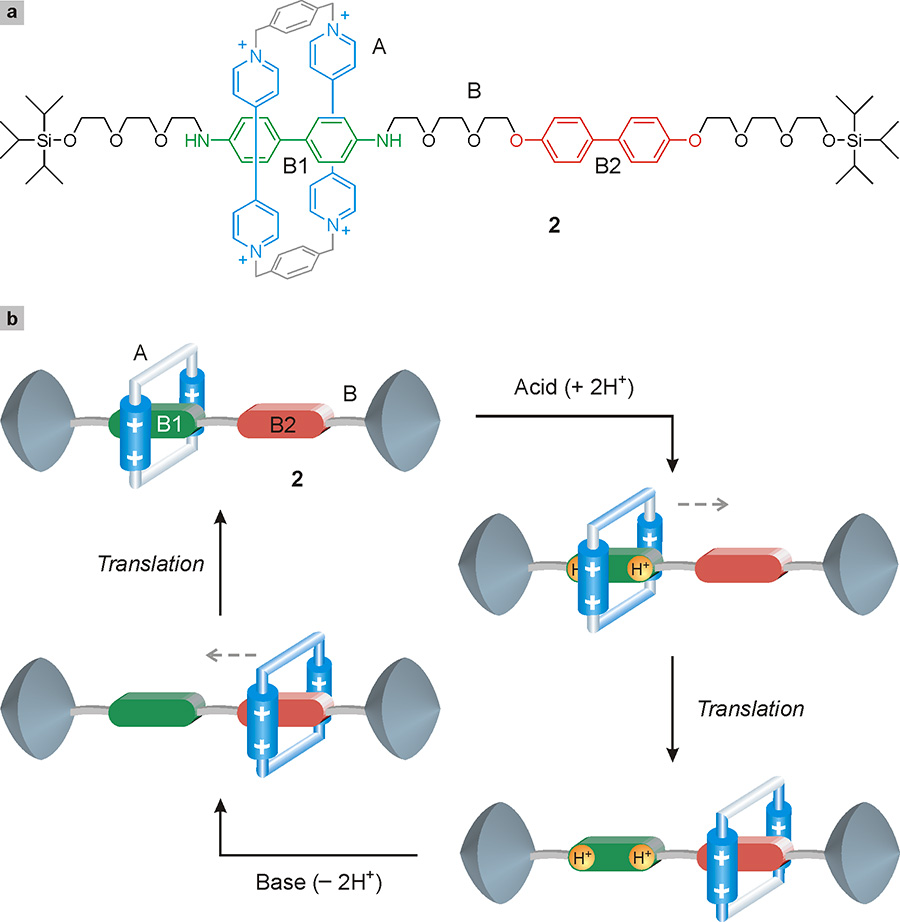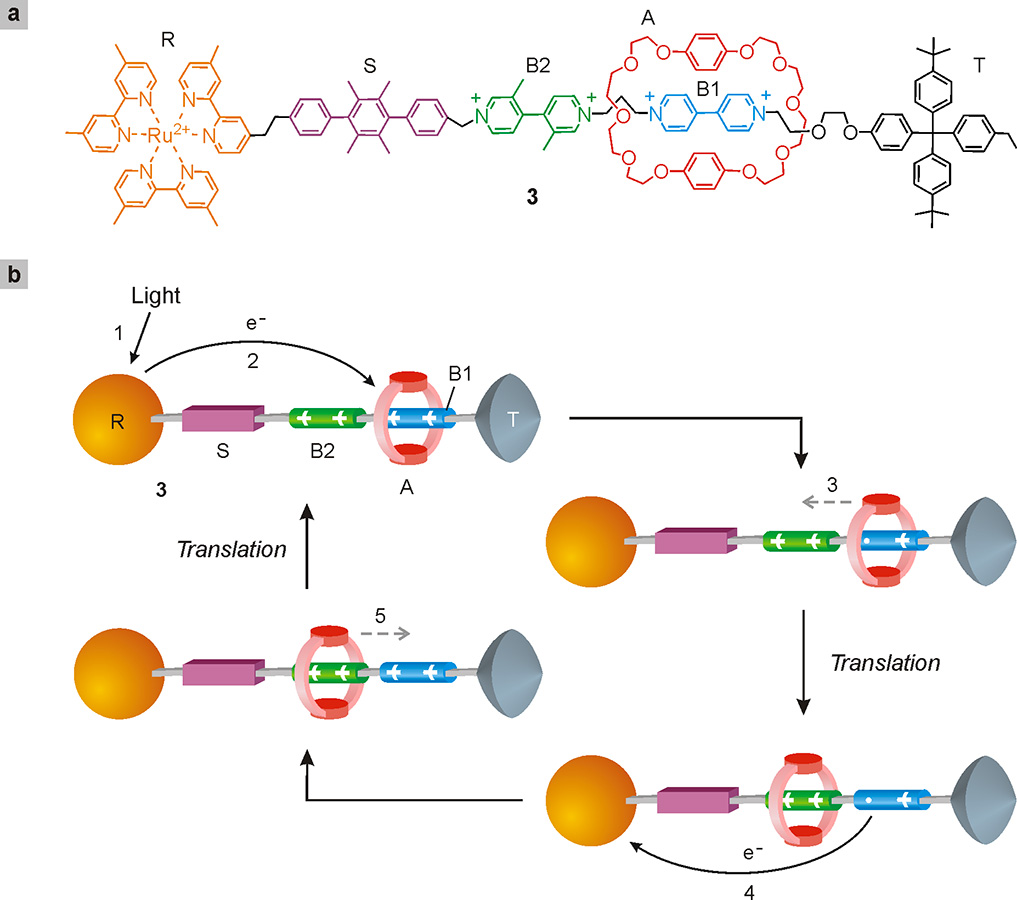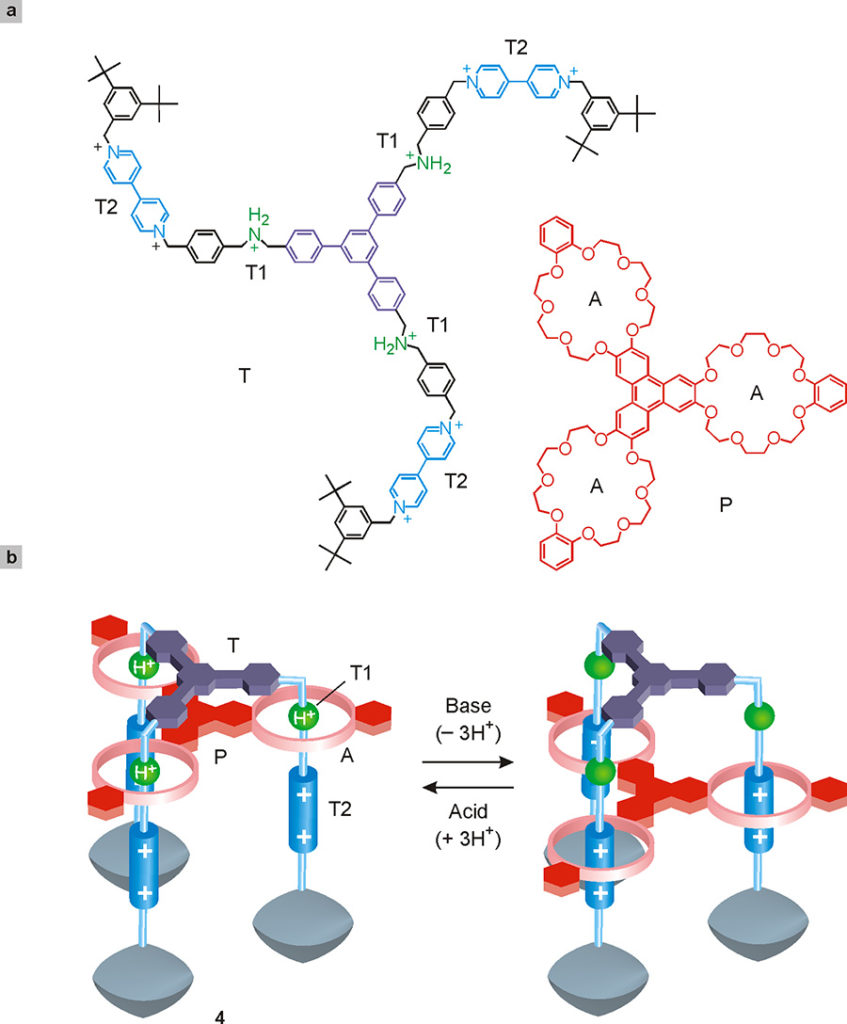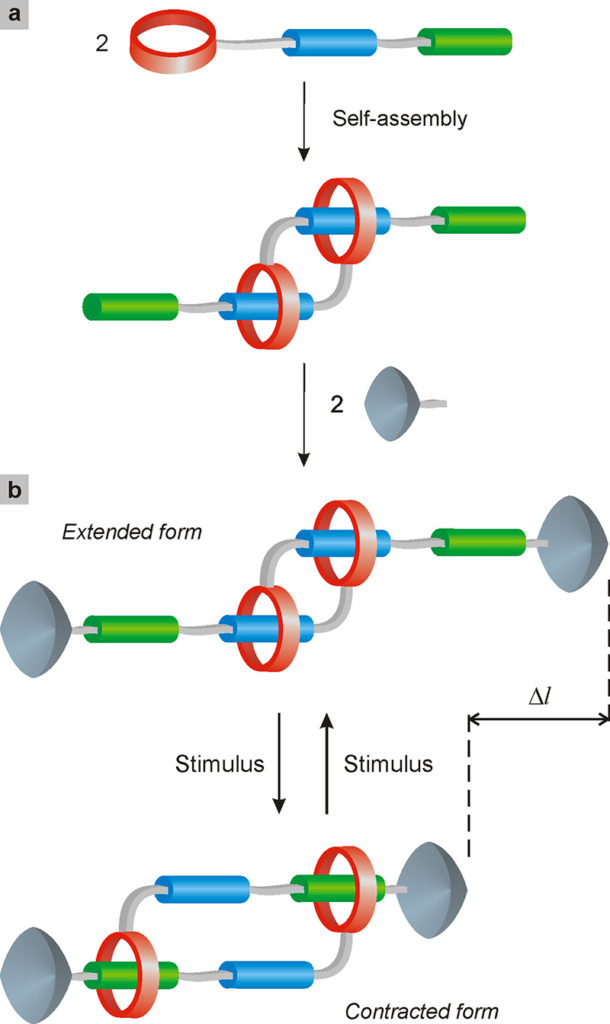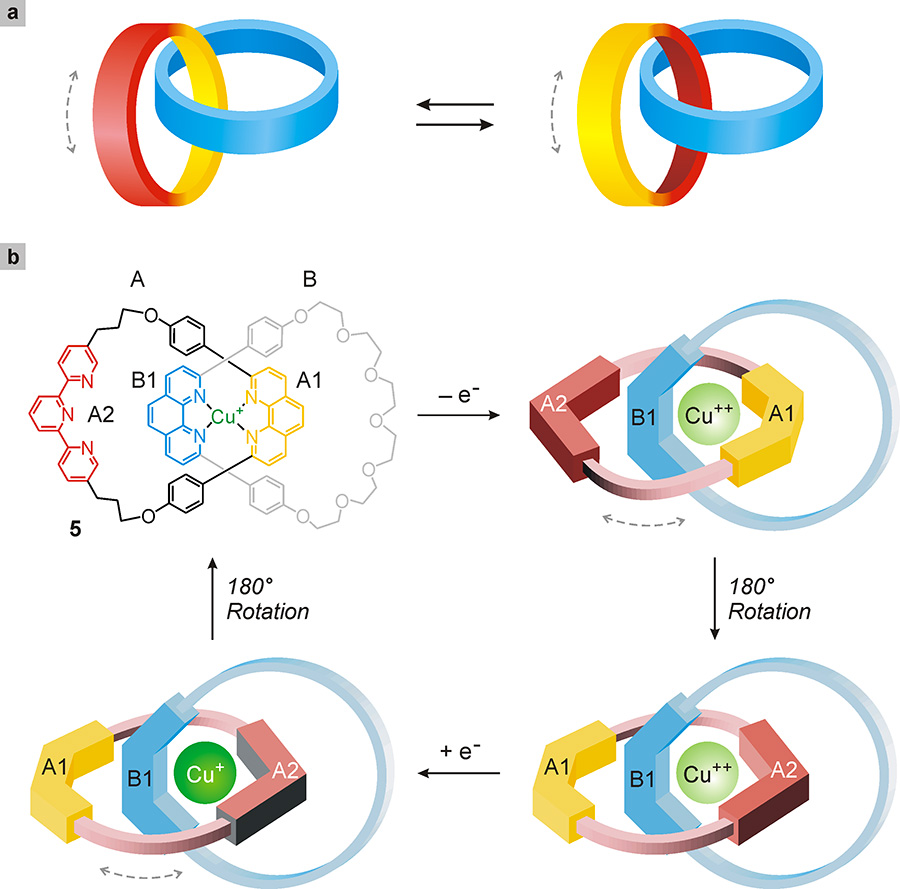4.2. Ultra-miniaturized binary memories
The artificial molecular machines discussed in most of the above examples are interesting not only for their mechanical aspect, but also from an information technology point of view. In fact, they can exist in two distinct states, interconvertible through external impulses of a luminous, chemical or electrical nature. For example, in the rotaxanes1See Chap. 3.4. Linear movements of Figures 20 and 21 the ring can reside along the thread either on the left or on the right station. Also the systems represented in Figures 22 to 24 are bistable. Information can therefore be written on them according to a binary logic. The state in which the system is, on the other hand, can be easily read since some of its properties (for example, absorption or emission of light of specific wavelength) change drastically in the passage from one state to another.
Jim Heath of the California Institute of Technology, in collaboration with Fraser Stoddart, used bistable rotaxanes and catenanes to build solid state electronic memories (Green 2007)2Green, J. E., Choi, J. W., Boukai, A., Bunimovich, Y., Johnston-Halperin, E.,
DeIonno, E., Luo, Y., Sheriff, B. A., Xu, K., Shin, Y. S., Tseng, H.-R., Stoddart, J. F., Heath, J. R. (2007) A 160-kilobit molecular electronic memory patterned at 1011 bits per square centimetre, Nature, 445: 414-417.. In this study the researchers exploited top down miniaturization methods to fabricate the electrical contacts of the memory elements; the latter, however, consist of molecular machines obtained through a bottom up approach. In short, the position of the ring along the filament of the rotaxane, which depends on the electrical potential difference applied to the contacts, determines the electrical conductivity of the junction. Therefore the memory can be written by varying the applied electrical potential, while the reading is entrusted to a conductivity measurement.
Thanks to the fabrication of electrical contacts with a thickness of less than 100 nm, memory elements containing no more than 100 rotaxane molecules could be constructed, reaching the incredible density of 1011 bits per cm2 (Green 2007). Some scientists see in these and other related research the first steps towards the construction of a new generation of computers (chemical computers) which, based on nanometric components, could offer performances much higher than those of the computers in use today. The thing, perhaps, is not surprising that much, if we think of the capacity of that special, perhaps inimitable, chemical computer that is our brain.



